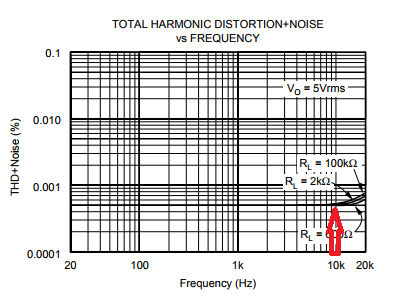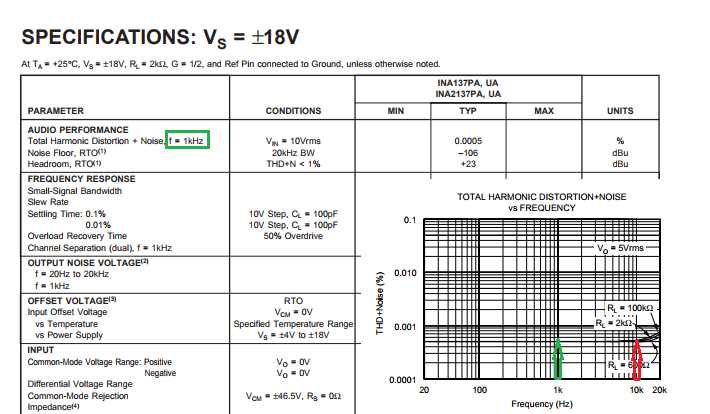For parts with date code 61QH1 and 61EG4, we observed THD+N @ 10kHz that is higher than previous lots from the past 15 years. All of the 1201 parts used from a 2.5K reel of date code 61QH1 had to be replaced.
Previously our measured THD+N with a 10kHz / 19dBu sine wave input was -108dB to -110dB. For the same measurement, this lot shows a value of -104dB typically.
The load on the output is 3.46k ohms.
The output signal level is 13dBu / 3.46VRMS
Replacing the part with one from an older date code resolved the distortion issue.
We observed the same reading from parts that were placed by our contract manufacturer and hand-soldered in-house.
NOTE: I submitted this to the TI Customer Support Center with a Customer Information Form, but they directed me to this site. I can send this form.




